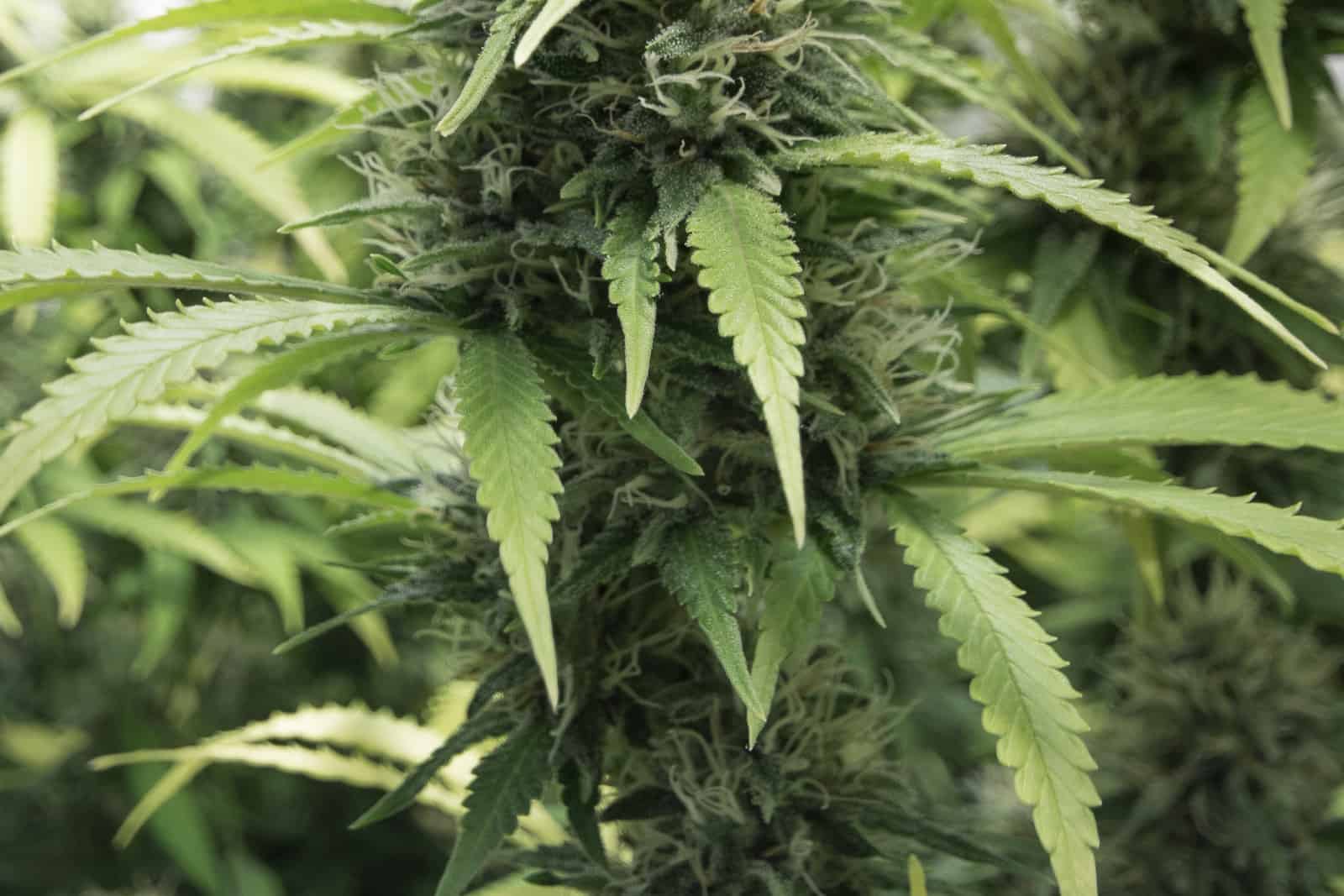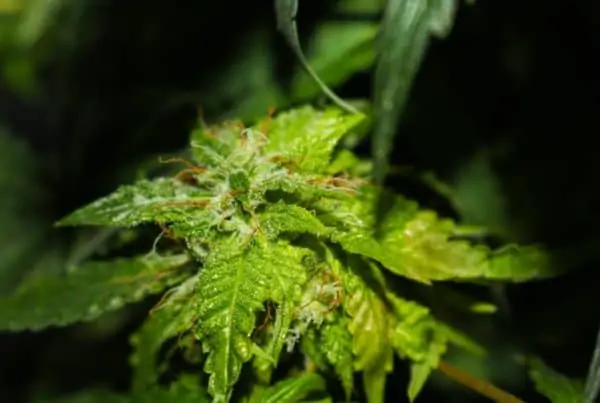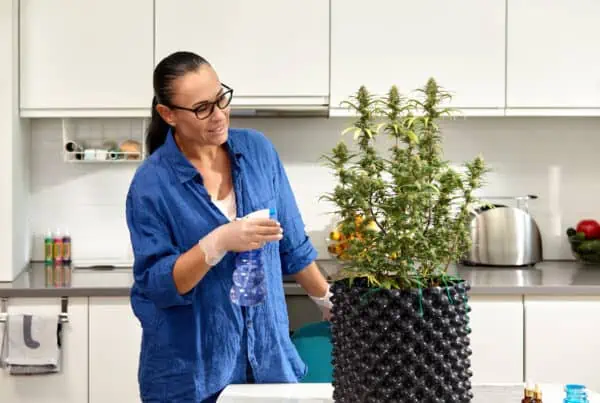TABLE OF CONTENTS
Growing cannabis in a cabinet is a popular choice among indoor growers, and has proven its success rate many times over.
Growing cannabis in a grow cabinet calls for similar requirements as compared to other indoor methods such as growing in a tent or growing in a closet.
For starters, we’ve decided to make the first section of this article on building your own cannabis grow cabinet, in case you don’t have one yet!
How to Build a Cannabis Grow Cabinet
To make your own cannabis grow cabinet, follow the following process;
- Find an old or unused cabinet
- Line the inside of the cabinet with mylar or reversed foil
- Hang your grow light to the inside of the roof
- Cut an appropriately sized hole in the back for fresh air intake
- Attaching an air filter to your intake hole is optional
- Cut a 4″ hole out of the top of the cabinet for outgoing air
- Add your plants with quality genetics
Growing Cannabis in a Cabinet Basics
When growing cannabis in a grow cabinet, your cannabis plants will thrive as long as you give them everything they need. In order to thrive and grow in cabinet growing, your cannabis plants need the following;
- Grow Light (LED is recommended)
- Fresh air
- Grow Medium – Soil or Coco Coir and appropriate supplements
- Temperature and humidity control
- Nutrients
- Water with pH levels of 6 – 7 pH & for hydro 5.5 – 6.5 pH
How to Grow Weed in a Cannabis Grow Cabinet – Detailed Guide
Lighting
The more lighting you have, the better your plants will grow and ultimately bloom. Better lights also equal flower quality, so ultimately, grow lights are probably the most important factor when growing in a cannabis cabinet.
With a few options out there on the market when it comes to choosing grow lights, we recommend LED as it remains the leader in cannabis cultivation for it efficiency.
Grow Medium
Regardless of whether you’re growing weed in a cabinet or any other space, your growing medium options remain the same.
One of the popular options is to setup a small-scale hydroponic system. In terms of irrigation, it’s low maintenance, and you have better control over the growing medium. Hydroponic marijuana also tends to grow faster than soil-based cousins.
When it comes to organic nutrients, these are generally more suited to soil growing. With organic soil feeding, the nutrients are slowly released every time you water the soil.
Whether you choose to grow hydroponically or in soil with additives such as perlite, vermiculite, bonemeal, etc, – doing in within a cabinet should serve all mediums right.
Ventilation
One of the most confusing aspects of setting up a marijuana closet is getting the ventilation system right. While it may seem confusing and time-consuming, it doesn’t necessarily need to be.
In general, you can achieve and maintain a balanced room temperature by simply opening up the windows or doors and allowing air to circulate freely.
A single oscillating fan will take care of airflow, while requiring minimal efforts. For cabinets, it is best to keep a desk fan or small circular fan inside.
For example, if you’re growing in a cabinet that measures 1m × 1m × 2m (with a total volume of 2m³), investing in an extractor fan isn’t a bad idea. The goal is to effectively maintain an optimal, consistent temperature in your indoor cabinet cannabis garden.
Temperature & Humidity Control
Excessively cold or hot temperature is your worst enemy will stunt the growth of your precious plants.
Therefore, you should maintain the daytime temperature at 75 °F (25°C) while keeping night temperatures around 68-72°F (20-22.2 °C). Whenever the temperature drops below 10 °F, it is likely to negatively affect the growth of the cannabis plants.
A central point of importance is that stable airflow will ensure consistent and strong growing of your plants. Be sure to keep the humidity at 40% -50% to avoid bud rot. Also eliminate odors and ensure the airflow system is working correctly.
Lastly but certainly not least, remember that cleanliness is next to Godliness!
Nutrients
As a marijuana cabinet grower you need to make sure you consistently give your weed plants the right nutrients. The vegetative stage and flowering stage have their own nutrient requirements, respectively.
Good news though, there are many nutrient companies that make good products that suit the need of every marijuana grower out there.
“
There are over 300,000 jobs in the cannabis industry. CTU trained me for one of them!

Makes $24.50 @ THC +
To Wrap it Up…
A cannabis grow cabinet or stealth grow box as a self-contained box for growing plants indoors is ideally equipped with all the tools you need to grow cannabis safely and successfully inside the house. It eliminates the need to set up a growing space while providing safety.
The best cannabis grow cabinet is equipped with (LED) grow lights, fans, air pumps, meters, reservoirs, and of course the pots with high-genetic seeds planted in them! Hopefully by the time you’re done reading this article, you’ll have mastered how to grow weed in a cannabis grow cabinet. Happy cabinet growing!
Master Grower Certification
To learn much more about how to grow cannabis sign up for online cannabis training at the marijuana grow school. Become a master grower with your Cannabis Training University cannabis certifications.

Luis Cordova
Luis Cordova is a distinguished author, and renowned expert in cannabis cultivation, who possesses a Master's degree in Plant Biotechnology and Pharmaceutical Science. As a valued contributor to highly esteemed publications such as Cannabis Training University and Maximum Yield Magazine, Luis has emerged as a trusted source of guidance and knowledge in the cannabis industry. Having written thousands of informative articles, Luis is widely recognized for his comprehensive expertise on cultivating cannabis, both indoors and outdoors.












 Jeff was involved in an accident where he endured a traumatic brain injury. He had a week-long stay in ICU where brain surgeons
Jeff was involved in an accident where he endured a traumatic brain injury. He had a week-long stay in ICU where brain surgeons  100% risk free money back guarantee within 48 hours after purchase if student has not completed any of the courses or exams.
100% risk free money back guarantee within 48 hours after purchase if student has not completed any of the courses or exams.